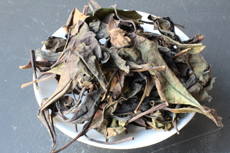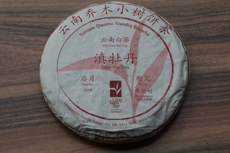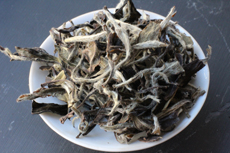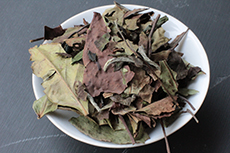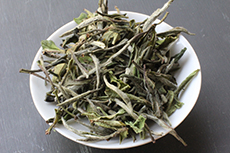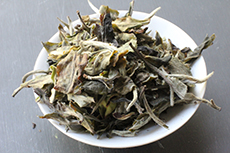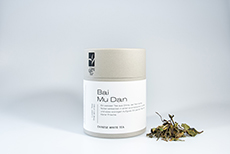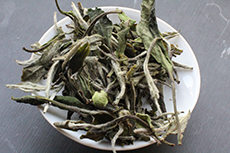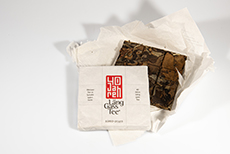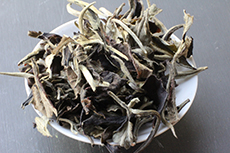.
Search results
Results 1 till 13 of a total of 13 (1 pages).
-
Blog Länggass-Tee
-
Da Bai
-
Hou Kui Bai Cha 2017
A white tea that is produced from a later harvest of the same trees that are being used for the genuine Tai Ping Hou Kui - hence a bit of an extravagant thing. Three leves are being harvested for this tea, the bud has already opened, thus the leaves are similar to what is used for a Bai Mu Dan or even a Shou Mei (later harvest, fully grown leaves). The leaves have been left to wither over a long period and have then be dried over charcoal. The result is a large leafed, wonderful white tea. It has been kept in China until 2019 and can be drunk immediately as well as being kept. -
Dian Mu Dan Bingcha 2019
A very beautiful Baimudan from Yunnan, carefully produced and withered over a long period. Because of the steadily increasing prices of the genuine white teas from Fuding and other regions in the Fujian province, there is more and more white tea being produced in Yunnan. Unfortunately, the quality of these teas is often not convincing. Dian is the shortened name of the province Yunnan, Mudan refers to Bai Mu Dan White Peony. The leaves come from tress that are some decades old and that are usually used for Pu Er; our Sheng Tai Cha also comes from that region. -
Bai Mu Dan 2013
A very good aged Baimudan. The production of this white tea is very similar to the one of making raw Pu Er. They differ, however, by the plant varieties used and by the locations in which they are grown, hence also by climatic differences. These are factors which have a significant impact on the tea's taste.This tea was stored and matured in China until 2017. It matured and got a littel dark. -
Shou Mei
A good and simple White Tea in a rather fair fashion, very large leaves and with hardly any buds, hence in the Chinese understanding a Shoumei. It's often sold as Baimudan (formerly written Paimutan) in Europe though. Contrary to most simple Bai Mu Dan, this tea is genuinely from Fuding, giving him more of the typical taste of this type of tea. -
White Needle
A classic Bai Mu Dan with very big leaves (formerly written Paimutan), of the lighter type. This tea comes from a top site in Fuding, well renowend for white tea. This tea is available for a surprisingly good price. Wilted in the sun . -
Bai Mu Dan
A very nice Baimudan (formerly written Paimutan) from Fujian province, with some tips. Contrary to many other Baimudan, this tea is genuinely from the province Fujian.This tea is also available in the sustainably produced box of our Édition collection: Bai Mu Dan Édition Classique -
White Tea
-
Bai Mu Dan Édition Classique
A Chinese white tea that incorporates slightly tart notes into an aromatic, rounded and sweetly spicy infusion. a delicate and crisply fresh tea. -
Mu Dan Wang
A genuine traditionally produced Baimudan of top quality (formerly written Paimutan). Mudanwang translates as King of the Baimudan and refers to tis quality.It has been wilted in the sun for approximately 50 hours; longer than most white teas today. This gives the tea a darker and softer, less green and grassy quality. -
Qiao Ke Li Xing Bai Cha 2021
A very beautiful Baimudan from Yunnan, shaped like a bar of chocolate, hence the name Qiaokelixing - chocolate mould. There are 9 pieces of 5-6g to break off. The plucking material has been wilted for a long time to produce a classic white tea of very good quality.The pluckings come from three different regions of Yunnan province, mixed from young tea trees from spring 2021 and 35% from old tea trees from summer 2021. -
Yue Guang Bai
Yueguangbai or Moonlight White is a white tea from Yunnan that is produced from large leafed tea plants. The harvest is the same as for a Baimudan. During the prolonged withering, one side of the leaves turns black, the other side with the down keeps its shimmering white colour.
.






